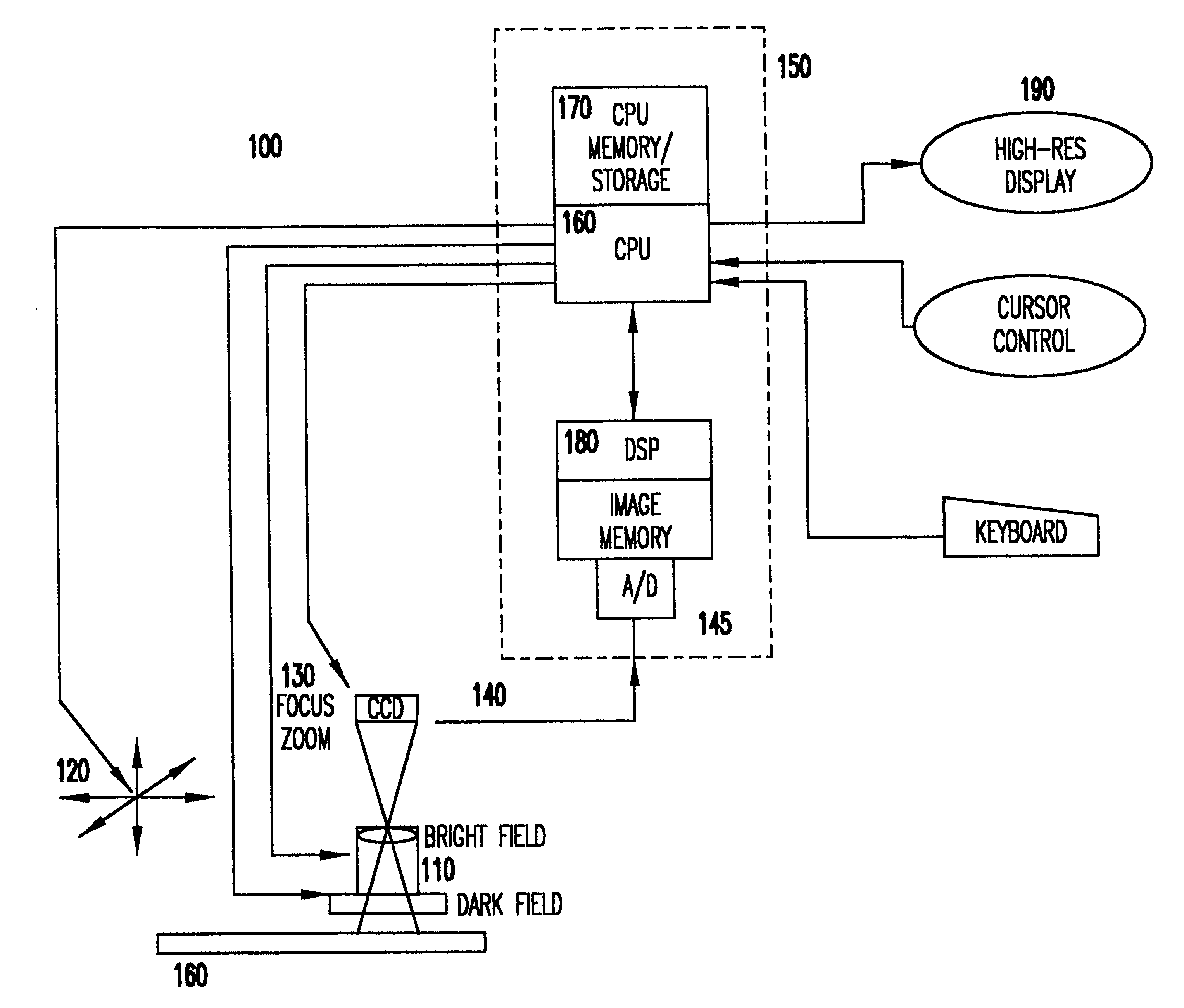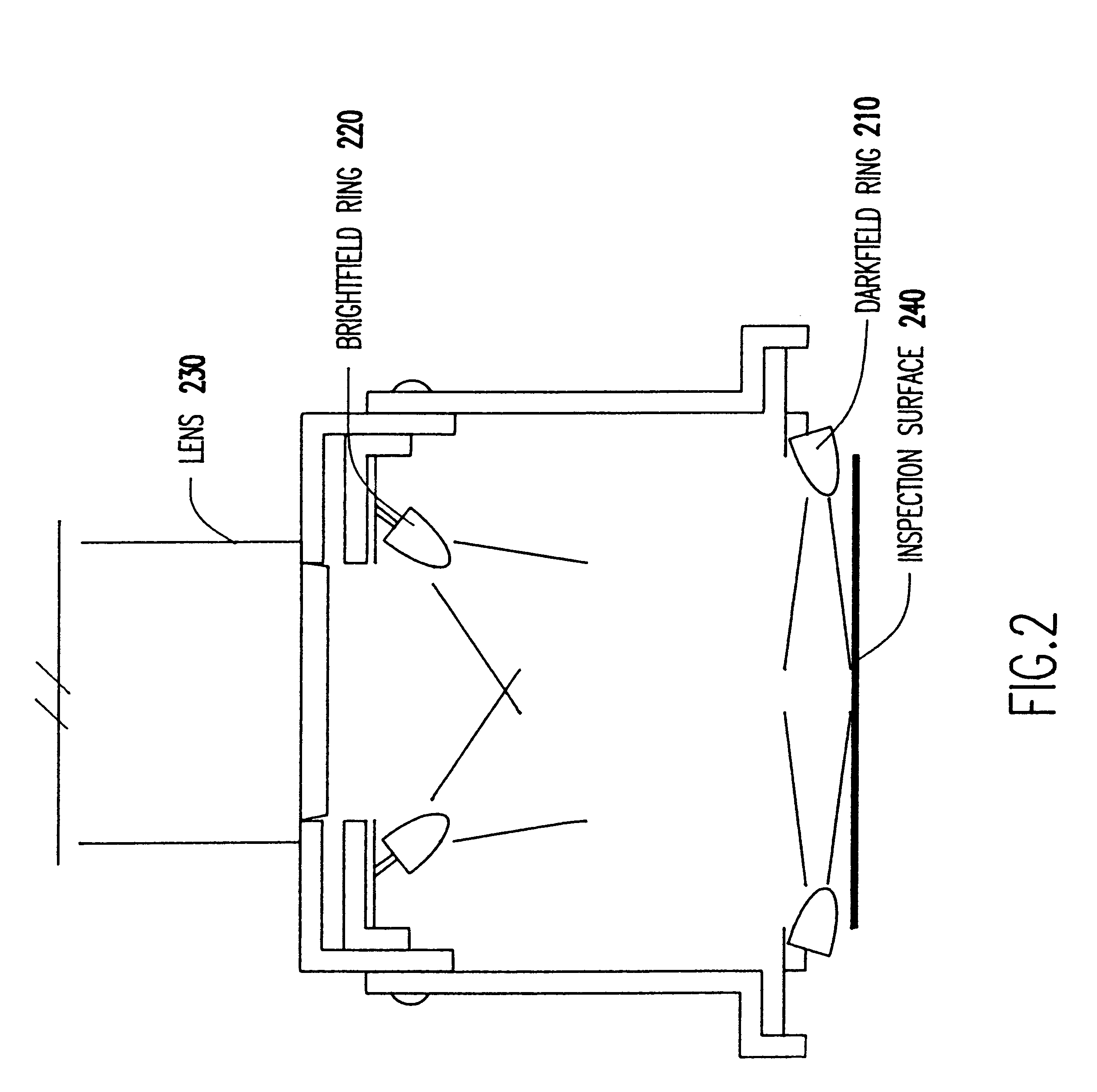Automated inspection system for metallic surfaces
a technology of automatic inspection and inspection system, applied in the direction of optically investigating flaws/contamination, measurement devices, instruments, etc., can solve the problems of high integration density, high manufacturing yield, and easy affecting of delicate metallurgical and chemical processes
- Summary
- Abstract
- Description
- Claims
- Application Information
AI Technical Summary
Benefits of technology
Problems solved by technology
Method used
Image
Examples
Embodiment Construction
Referring now to the drawings, and more particularly to FIG. 1, there is shown a high-level block diagram of a preferred form 100 of the invention. While some features of FIG. 1 may be known in automated inspection systems not directed to or adapted for surface inspection, as alluded to above, and some individual elements are commercially available so that, as is preferred, the system can have a modular architecture which is easily reconfigurable for specific inspection tasks, the combination of elements depicted is, in fact, particularly adapted thereto. Further, at the level of abstraction represented in FIG. 1, the general organization of the invention may appear more similar to known systems than may, in fact, be the case, as will become evident from the following discussion. Accordingly, no portion of FIG. 1 is admitted to be prior art in regard to the present invention.
For example, all optical inspection systems, including known systems, require an arrangement 110 for illumina...
PUM
 Login to View More
Login to View More Abstract
Description
Claims
Application Information
 Login to View More
Login to View More - R&D
- Intellectual Property
- Life Sciences
- Materials
- Tech Scout
- Unparalleled Data Quality
- Higher Quality Content
- 60% Fewer Hallucinations
Browse by: Latest US Patents, China's latest patents, Technical Efficacy Thesaurus, Application Domain, Technology Topic, Popular Technical Reports.
© 2025 PatSnap. All rights reserved.Legal|Privacy policy|Modern Slavery Act Transparency Statement|Sitemap|About US| Contact US: help@patsnap.com



